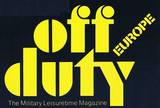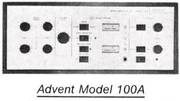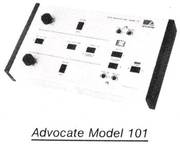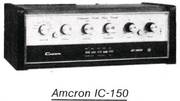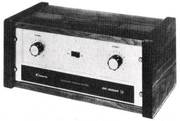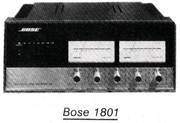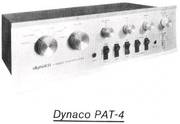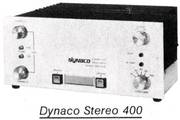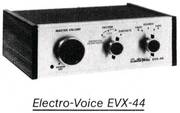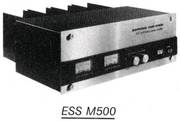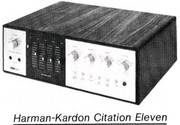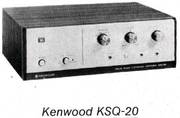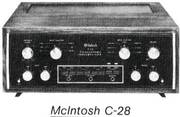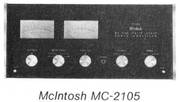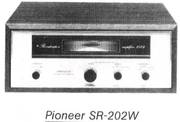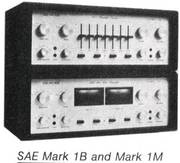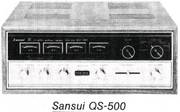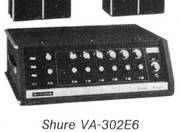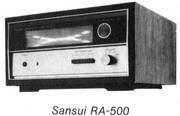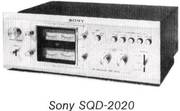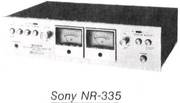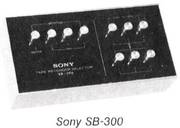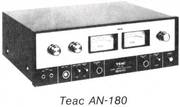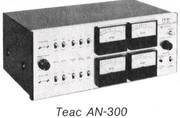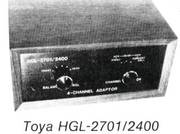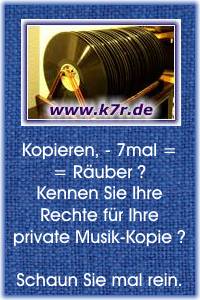"off duty" 1970 - 1997 - eine Freizeit-Zeitung für's US-Militär
Die in diesem amerikanischen (Freizeit-) Shopping-Magazin angepriesenen Hifi- und Video-Produkte waren auschließlich amerikanischen und kanadischen Militärangehörigen zugänglich - also zu kaufen - und vor allem zu ganz ungewöhnlich (verblüffend) niedrigen US $ Military-Preisen. Zu der einführenden "off duty" Seite geht es hier lang. - Um 1970 begann der weltweite Hifi-Boom bis zum 1. Crash 1978 und dann wieder zum 2.Crash um 1990. Über die 20 Jahre nach 2001 lesen Sie mehr in den Kolumnen auf diesen japanischen Seiten.
.
Hifi-"Spezialgeräte" aus dem Dezember 1973 und Januar 1974
Hier werden die damals noch "besonderen" oder "anderen" Hifi-Einzelgeräte - die "separates" - aufgelistet und beschrieben und auf dieser Seite mit Military-Preisen verbunden.
Zu dieser speziellen Hifi-Einzelgeräte - Liste des Vorjahres 1973 geht es hier lang.
"annual survey" - (zu bezahlende) jährliche Marktübersicht
.
Personalized Hi-Fi
Special components let you design your own system - By THOM PRINGLE - Off Duty / Europe / January 1974
.
The way an audio system should sound
ALMOST EVERYONE has some ideas about the way an audio system should sound. Some think that 4-channel is a hoax. Others support quadraphonic sound completely. Some people like noise reduction systems. Other people are looking for nothing more than background music to listen to while they read.
For the confirmed audiophile, though, there is nothing more exciting than building his own audio system, component by component. Selecting a special preamplifier. Finding just the right power amplifier. Searching for a special system control center. And the new units, such as dynamic noise limiters or equalizers, are really frosting on the cake.
This month our SHOPPER
This month our SHOPPER is for the person who's into audio in a big way. The special audio components and gimmicks available to you are all here, along with explanations of what they are and how to use them. Since they are special, they usually have high prices but you can find some items which can add an extra dimension to your system without ruining your bank account.
We might also say that the units in this SHOPPER are for the avant-garde audio fan since special components invariably wind up as standard features in equipment after a few years. Dolby noise reduction units were unusual a few years ago - now they are being built-in as standard features of several new receivers. Equalizers, separate components a short while back, are now an integral part of many preamplifiers. Nevertheless, it is almost impossible for any manufacturer to produce a combined unit that will please an avid hi-fi fanatic and it's for this reason that special components continue to be produced and sell well.
Several categories as "special" components
There are several categories of components which can be classified as "special" components. The following explanations will give you some idea of the various units available but keep in mind that new ideas and products are constantly being introduced and it is impossible to present a comprehensive review of all of them.
Amplifiers.
These units have the basic job of increasing signal strength and they do it in two ways - by increasing voltage and by increasing current. Naturally, there are specific design and operating considerations for each job and, therefore, there are two types of amplifiers - preamplifiers and power amplifiers. You can, of course, buy an integrated amplifier which has both of these amplifiers in one unit but you may want special features in each section which you can't find in all-in-one units.
Preamplifiers.
You'll find both stereo and 4-channel preamplifiers listed and, in most cases, they will have frequency responses which are so good (3 Hz to 100,000 Hz, for instance) that you rarely have to be concerned about it. Therefore, in checking out a preamplifier, look at its special features and hum-and-noise (S/N ratio) rating.
Many preamplifiers have built-in equalizers, 4-channel matrix decoders and special control circuits. If you desire certain functions in your preamplifier, chances are you can find them if you search long enough since just about any combination of special features can be found.
A preamplifier should produce as little noise as possible and may be rated for hum and noise by some manufacturers or signal-to-noise ratio (S/N ratio) by others. In any case, expect a figure of 70 to 80 (for example, hum and noise -75 dB or S/N ratio 75 dB) from high-quality preamplifiers. The higher the figure, the better the performance of the unit.
Power amplifiers.
The separate power amplifiers today are true super amps with fantastic capabilities and astounding specifications. Power outputs extend up to hundreds of watts (RMS) per channel with 0-100k Hz frequency response and practically unmeasureable distortion. Most all of the power amplifiers have unusually good specs and, therefore, if you're thinking of buying one, about all you really have to be concerned about is how much output you want and your financial condition.
How much power you need depends on several factors, the largest of which is the type of speaker system you want to drive. If you have very inefficient speakers, such as acoustic suspension types, you may need tremendous amounts of power to produce low-frequency transients. But, here again, it depends on how demanding you are and whether you are willing to spend a lot of money to obtain the best low-frequency reproduction.
.
Equalizers.
When you get to the place where you start worrying about the total performance of your system, you are ready for an equalizer.
The equalizer can be adjusted to compensate for the aggregate response of your amplifier, speakers, room acoustics and even your ears' response. As you can see, it is possible for an equalizer to make a big contribution toward the overall sound of your system, depending on how irregular the response of your system is. Of course, it's also possible that an equalizer will do very little for your system, so if you can talk a friend into loaning you his, you can see how much an equalizer can do for you before buying.
Basically, an equalizer allows you to adjust the response of your stereo system to give you the kind of effect you want. The equalizers usually have one control for each frequency range - most offering at least five frequency range controls. For families which take their listening seriously, each member of the family can keep a chart of the control settings which suit him best and the equalizer can be reset depending on who is listening to the system.
Equalizers cannot be classed as inexpensive additions to your system, but can offer definite advantages to the serious audiophile.
.
Reverberation units.
The reverberation units listed in this section are strictly reverb units (combined with necessary amplifier circuits) and are meant solely for producing reverb effects. These reverb units use the Hammond-type delay unit and controls are usually limited to a type of feedback control which determines how long the reverberation continues.
With a slight bit of reverberation fed either to the main speakers or a separate set of speakers, you will be surprised at how much a reverberation amplifier can add to the sound of your audio system.
Noise reduction units.
Dynamic noise reduction units are here to stay and the most popular system is the Dolby system. Other systems exist but it looks like the Dolby B-type process has things pretty will wrapped up.
In effect, the Dolby circuit is a dynamic high-frequency filter which varies the high frequency response of your tape recorder in such a way as to reduce the apparent noise level. The idea has received wide endorsement and is now being applied to FM broadcasting as well and, therefore, is included as a built-in feature of many new receivers.
The Dolby units listed are meant to be used as tape recorder control units which are connected to the inputs and outputs of your recorder and stereo system. Any material passing between your system and the recorder must pass through the Dolby unit where it is processed. All of the units have the necessary controls and meters for calibration, and once calibrated usually do not need to be bothered again.
The main question to consider when buying one of these noise reduction units is whether you want simultaneous record/playback capability. If you have a three-head tape recorder and want to monitor off the tape, then you'll have to spring for one of the larger units which means a bigger price tag.
.
4-channel adapters.
There are three 4-channel disc encoding systems still slugging away to see who will come out on top in the 4-channel game; CD-4 (subcarrier), SQ (matrix) and "regular" (matrix). So, for the individual who wants to go 4-channel, it is necessary to cover all possibilities thereby eliminating future obsolescence of equipment.
Fortunately, most of the 4-channel equipment available handles at least SQ and Regular matrix material and some all-in-one units also include CD-4 demodulators. Most all units have some kind of provision for connection of 4-channel adapters, thus making alteration quite easy.
Many types of adapters
In this SHOPPER, you'll find many types of adapters and units which can be added to your system. There are preamplifiers, integrated amplifiers, straight decoders, synthesizers and all sorts of combinations of these devices. For further information, see our discussion of 4-channel at the end of this article.
Miscellaneous:
There are many other types of special components being produced which make interesting additions to a stereo system. Among those available to military buyers are switching units, electronic dividers, and test units.
If you are the type who has built up a collection of different types of equipment over the years and likes to make comparisons, you probably have some method which allows you to connect the various pieces of gear into your system. The whole process can be simplified with one of the comparator units now available. They vary in complexity from simple switch circuits to relay operated, remote controlled professional units. Again, these are items for the real audio enthusiast, but they sure beat stringing things together with alligator clips.
When a loudspeaker system splits up the incoming signal to divide it among the various speaker elements (woofers, tweeters, etc), the cost in power is actually greater than most people realize. For this reason, the electronic crossover networks were designed to be used before the power amplifiers thereby increasing the efficiency of the overall system. This, then, requires additional amplifiers, and is called the bi-amp or tri-amp system depending upon the number of divisions produced. Several manufacturers produce these electronic crossover units which are crossovers only and not power amplifiers
One of the most entertaining pieces of gear is also the least necessary - the audio test unit. Actually, an attractively packaged oscilloscope, the units often have built-in oscillators, meters, switching circuits and calibration standards. The most complete models allow you to make some very exacting tests of professional quality and almost all have connections for FM multi-path displays.
.
Personalizing in 4-Channel
While the methods of attaining 4-channel sound have become somewhat standardized, the variety of equipment now available is more bewildering than ever. Basically, though, there are three types of equipment add-on adapters, plug-in modules and all-in-one units.
Add-on adapters
Add-on adapters are designed for people who already have a stereo system and want to convert it to 4-channel. The adapters can be used, too, to extend the ability of an existing 4-channel system which does not have the capability of decoding one of the three types of 4-channel information (SQ, Regular or CD-4). Thus, you can buy adapters which will demodulate only CD-4 material, or adapters which will decode only matrixed material.
Unfortunately, all-in-one adapters which can handle both CD-4 and matrixed material are not yet available even though many of the new matrix decoders can handle both SQ and Regular matrix material. In order, then, to have a system which is ready for anything on the market, you will have to have at least two adapters.
.
- Anmerkung : Und das haben die meisten möglichen (potentiellen) Kunden nicht mehr akzeptiert. Sie wollte ine Lösung und ein System haben.
.
Two general types of adapters
When looking over the adapters available, you will also find that there are two general types of adapters, those which have only processing circuitry and those which include control and amplifier circuitry. To the adapters containing only processing circuitry (decoder or demodulator circuits) you will have to add power amplifiers to drive the rear channels. Most all of the adapters connect to the output of your present stereo preamplifier and need no additional preamplifier, and most will also have master control circuitry so that you can control the overall volume and 4-channel balance with one set of controls.
Adapters whith built-in power amplifiers
Adapters which have built-in power amplifiers need no additional amplification. Most of the built-in power amplifiers in adapters are low-power types with adequate but not outstanding specifications. While they are sufficient to drive high-efficiency speakers they have difficulty driving low-efficiency speakers and you may want to consider selecting your own rear-channel power amplifier if you except better-than-average performance. Remember, though, that most of the material fed to the rear channels is ancillary (or ambient) sound which will not be drastically improved by super equipment.
Probably the biggest problem faced by individuals installing adapters is how to make the connections between units. If you already have a stereo system and want to convert to full-capability 4-channel, you will find the wiring to be formidable. To add two adapters, a 4-channel tape deck (or two), two more speakers and possibly another stereo power amplifier, in such a manner that everything works properly, may leave you scratching your head.
To try to give specific advice here about this is almost impossible since every manufacturer uses different connections, circuits and controls in his equipment. Your local audio club, however, has people who are experts at setting up audio systems and they are the people to contact when you are in this situation.
All-in-one 4-channel receivers
Currently on the market are many all-in-one receivers (tuner-amplifiers) which have four amplifier channels and all of the circuitry necessary to demodulate CD-4 signals and decode both SQ and Regular matrix material.
Therefore, the easiest and most complete way to get into the 4-channel game is to throw out your current rig and buy one of these new giants. As you can imagine, this is an expensive way to get into 4-channel - and it still may not give you everything you want.
Many of the all-in-one units do not incorporate the latest matrix logic circuits and, therefore, may be outdated when the new rash of units with IC logic circuitry appears. One answer to this question is a unit with provisions for plug-in modules.
4-channel units with specific provisions for plug-in modules
Several manufacturers are now producing 4-channel units with specific provisions for plug-in modules for the various 4-channel disc systems. Thus, when you decide to go 4-channel, you can buy the appropriate module, plug it in and you're in business. Should improvements be made in the future, you can buy an advanced module incorporating the improvements to update your system. The disadvantage is, of course, that you are limited to the basic features of the main unit and your flexibility will probably be hampered if you want to customize your system.
Also available are the "universal" decoders developed by some manufacturers which are said to decode any matrix material. These units, as well as the "high-level" decoders which can be connected to the output of a stereo amplifier, have not achieved the acceptance of the other 4-channel systems. There are still a few models available but they face extremely difficult competition and, unless the trend changes, they will most likely fade from the market before long.
For the hi-fi enthusiast who likes to tinker and personalize, there are unlimited possibilities with 4-channel.
.
Das war also das Vorwort zu den Gerätebeschreibungen 1974
Die große Detail-Liste - das "shopper survey" - kommt auf dieser Seite.
.

